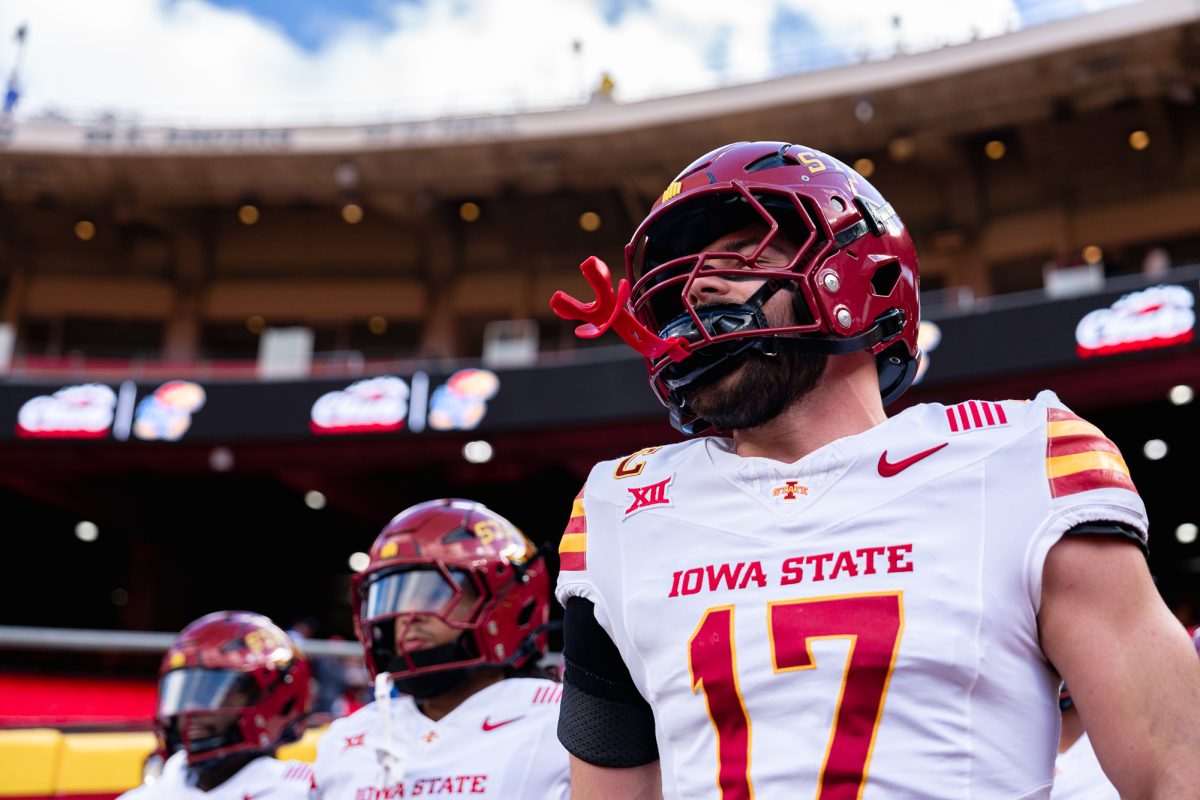Police armed, ISU Alert set up
April 15, 2008
One year ago today, a Virginia Tech student shot and killed 32 fellow students before killing himself.
In the wake of this event and others of its kind, universities around the country have implemented new policies to tighten security in an effort to predict and prevent violence on their own campuses.
In the last year, Iowa State has implemented its ISU Alert system and campus police officers have been armed. Over the summer, loudspeakers will be installed on campus, said Dione Somerville, dean of students.
“A lot of what the university has been doing was in place before the Virginia Tech tragedy,” Somerville said. “I really think that what we’ve done most after the Virginia Tech incident is perfect our practices and procedures.”
She said Iowa State’s Critical Incident Response Team has been in place since 1994.
“It was created following a lot of national concerns about workplace and campus violence,” Somerville said. “It covers anything that you can think of that would be disastrous to a campus community, in addition to some of the things that are more prevalent in the news, like a person with a gun on campus.”
Though CIRT does step in when a student or faculty member is determined to be a threat to themselves or others, she said, CIRT does not profile students.
“We would never discuss any student’s information in a way that is illegal or unethical, but there’s a necessary level of sharing information that is necessary for us to be able to help the students,” Somerville said.
However, she said, CIRT only steps in when a person gets to a level where he or she is violent or becoming violent.
“If you’re at the point where you aren’t coping in the academic environment well, our main goal is to reach out to students so that they know that we care about them and we want to help them,” Somerville said.
CIRT would always respond to events such as bomb threats, tornadoes and train derailments, she said.
“All of those things would help to put into perspective the kinds of things that CIRT would be activated for,” she said. “Just a student with mental health issues would not warrant CIRT’s intervention – their behavior would have to be remarkable for that to happen.”
CIRT has been using incidents like Virginia Tech shooting and the Northern Illinois University shooting to determine what improvements should be made to the ISU campus.
“The governor of Virginia commissioned an external review that was made available to the public,” Somerville said. “There were several other pieces that were reviewed by [CIRT] so that we could really talk about some of the things that we can improve on.”
She said the ISU Alert system was one of the things effected quickly after CIRT did its public review.
“I was involved in the implementation of the ISU Alert system, and that was a wonderful collaboration across campus,” Somerville said. “Also, refinements have been made to the homepage so, if we ever do have an emergency, a special ISU emergency homepage will be used.”
She said she felt the ISU campus was a safe place, but the perception of safety on campus was definitely challenged by the incident at Virginia Tech.
John McCarroll, executive director of university relations, said the ISU emergency homepage would replace the existing homepage under certain circumstances.
“People will still have the ability to access the regular homepage, but the purpose of this is to ensure that there’s no doubt about what’s going on. It would fill the screen, essentially, and it would state the emergency situation,” McCarroll said.
He said the emergency homepage is just one aspect of the comprehensive emergency notification plan that Iowa State developed after Gov. Chet Culver asked each of the three regent universities to submit a plan of reaction.
ISU Police Capt. Rob Bowers said there is also an emergency message recording that people can access by calling 294-5000. He said people would be able to access updates as an incident progresses.
“That will help to get information to people, and it’s also important to get calls away from the emergency numbers because, in an emergency, those lines are going to be inundated,” Bowers said.
He said that, during any type of emergency situation, police and 911 dispatchers are usually overwhelmed with phone calls. The hope was that an emergency recording would help to alleviate the overwhelming volume of calls received.
Another change effected in the past year was the arming of the campus police.
Bowers said Virginia Tech brought the issue of guns to the forefront, but it wasn’t something that happened overnight.
“One thing to keep in mind is that when police were armed, it was just one of the recommendations [in the comprehensive security plan],” he said. “The other ones dealt with emergency notification, threat management and critical incident management.”
ISU Police Cmdr. Gene Deisinger said police officers on campus have to go through certain types of specialized training to carry weapons and to be able to effectively respond to various situations on campus.
Officers are trained on how to handle an active shooter, but they also train in emergency medical treatment. The university has kept a stable approach to safety, he said, but there is always an upsurge in community concern after violent events.
“Human nature is that people may be over-identifying those people of concern, and while there’s an increase in sensitivity to the issues and an increase in reporting them, that doesn’t necessarily mean that there’s a greater danger,” Deisinger said. “Certainly after the Virginia Tech, we saw an increase in reports of concern. It was starting to taper off, and then after the Northern Illinois shootings, it increased again.”
Bowers said 40 new security cameras have been installed around campus in the past year. They were mainly placed in administrative areas, such as the Financial Aid Office and the Accounts Receivable Office, where there was a potential for a problem. However, most of those cameras were intended to be placed before the incident at Virginia Tech.
Another aspect of concern, said Brian Monahan, assistant professor of sociology and author of an upcoming book on 9/11, is that the media can sometimes affect the way the public responds to violent events that come into national attention.
“What I’m basically saying is when something gets put together as a public drama, there are certain elements that get focused on,” Monahan said.
He said this focus can sometimes lead to a simplification of the facts of the event or issue, which can obscure the issues that need to be addressed.
“Where it leads to an issue like campus violence is you’ll have future events like what happened at Northern Illinois that get a lot of attention, but if you go back and look at that coverage, especially after it was no longer live coverage, it was a log of profiles about people involved,” he said.
Monahan said these profiles of police officials, students, victims or the offender can obscure the question of “Where do we go from here?”
“I’m not saying it doesn’t get treated at all, but it really gets drowned out by the other messages,” Monahan said. “So I’m not saying we’ve made rash judgments around Virginia Tech responses, but there’s a danger of that.”
He said it was important to slow down and make sure policies and procedures stemming from these types of events are the product of careful consideration and an understanding of all of the details.






